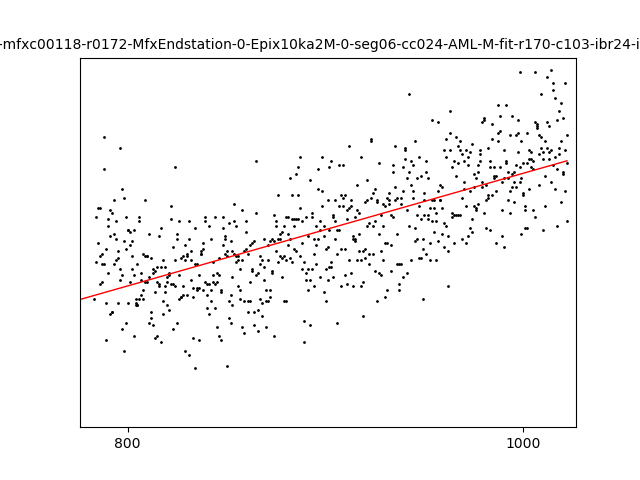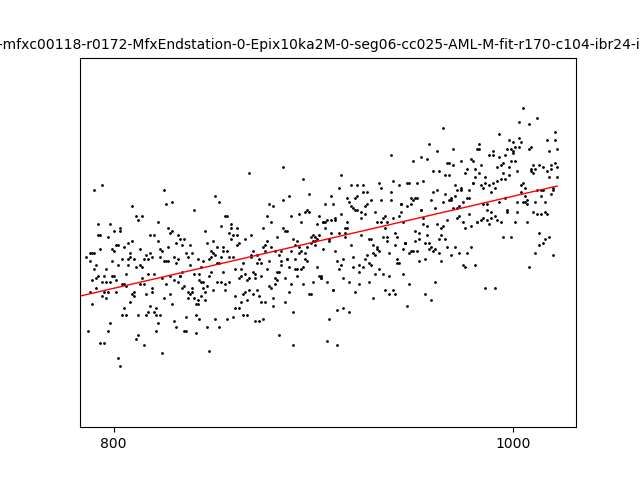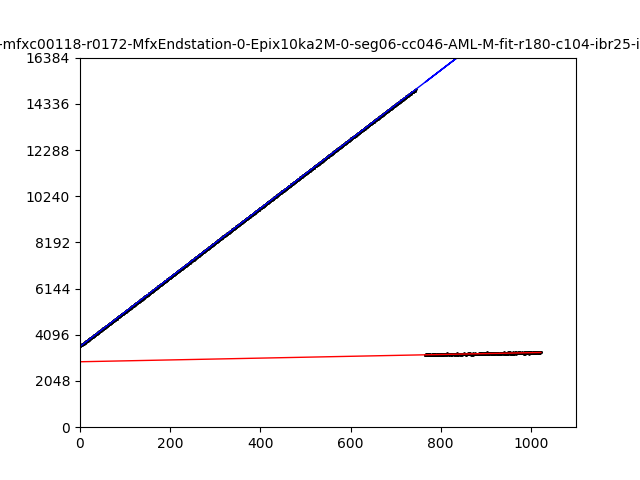Data
exp=mfxc00118:run=172 M2.1 - charge injection (CI) run
Request from Chris
O'Grady, Paul Christopher <cpo@slac.stanford.edu> Thu 10/1/2020 11:28 PM Hi Mikhail, For my water-ring data I have to use pixels that are “close together”, so they get roughly the same water-ring signal. That means I have constraints on which pixels I can use and [6,20,97] is too far away. Would it be possible to get your folded AML_L charge-injection plots for these pixels? “bad”: [6,170,103:105] “good”: [6,180,103:105] Thanks... chris
CI data and fits for points
panel 6 170,103
line begin-end: (782,3263)-(1022,3327)
panel 6 170,104
line begin-end: (785,3155)-(1022,3208)
panel 6 170,105
line begin-end: (790,3233)-(1022,3279)
panel 6 180,103
line begin-end: (765,2937)-(1022,3034)
panel 6 180,104
line begin-end: (765,3210)-(1022,3313)
panel 6 180,105
line begin-end: (761,3106)-(1022,3209)
Comparing Above Charge Injection Results To Water Ring Data In AML_L
This plot produced by "python aml_new.py ~cpo/ipsana/epix_aml_93_badgoodpix_allevts.h5". h5 file from "bsub -n 24 -q psanaq -o %J.log mpirun python max_det_epix_amllswitch.py exp=mfxp17518:run=93".
Notes:
- first 3 plots are various bad pixels (in the module 6 bad asic) vs. various good pixels (in a nearby module 6 good asic)
- fourth plot is a good pixel vs. a good pixel
- the overlaid lines are charge injection result, including the approximate range covered by charge injection
- in order to compare different pixels, the charge injection lines assumes that the same pulser DAC value injects the same charge into each pixel
Conclusions:
- the charge-injection data looks significantly different than the water ring data for bad/good pixel comparison plots. looks reasonable for good/good pixel comparison plots
- if one believes the charge-injection gain measurements, this is evidence for a check-mark gain pattern in the bad asic: lower gains at lower values, higher gains at higher values.
- the water-ring data suggests that charge-injection gains should not be used for high-intensity
- the check-mark isn't the whole story, since the water ring data in the bad asic does not match the charge-injection data (the charge-injection line does not pass through the middle of the water-ring points).
References
Overview
Content Tools


















